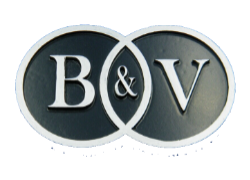
Hamburger Flugzeugbau (HFB)
Amazing Hamburger Flugzeugbau (HFB) Blohm & Voss
Hamburger-Flugzeugbau GmbH was a German aircraft manufacturer founded in 1933. It was was known as Abteilung Flugzeugbau der Schiffswerft Blohm & Voss from 1937 until it ceased operations after World War II.
In 1933 the Blohm & Voss shipbuilding company in Hamburg was suffering a financial crisis from lack of work. Its owners, brothers Rudolf and Walther Blohm, decided to diversify into aircraft manufacture, believing that there would soon be a market for all-metal, long-range flying boats, especially with the German state airline Deutsche Luft Hansa. They also felt that their experience with all-metal marine construction would prove an advantage. It was at that time commonly believed that transatlantic air transport would soon take over the role filled by the luxury liners of that time. It was also thought that those planes would be seaplanes and flying boats as they could use the infrastructure and capacity of the seaports already in place, while land facilities at that time were unsuited to such large aeroplanes.[

Besides aircraft, during World War II B&V also developed a number of air-launched munitions such as glide bombs and torpedoes. Although the company built thousands of examples during development, none entered operational service. These were:
 |
|||||||||||||||||||
|
|||||||||||||||||||
|---|---|---|---|---|---|---|---|---|---|---|---|---|---|---|---|---|---|---|---|
1937-present
BV 138 Seedrache (sea-dragon), originally designated Ha 138. Trimotor maritime patrol flying-boat. Only type to enter both series production and operational service, some were built under subcontract by Weserflug.
BV 141 Reconnaissance, originally designated Ha 141. Asymmetric reconnaissance prototypes. Some 20 pre-production examples delivered but none saw operational service.
BV 144. transport with variable-pitch wing. Two built in France by Breguet.
BV 155. High-altitude interceptor prototype, derived from the Messerschmitt Me 155 project.
BV 222. Wiking (Viking). Six-engine transport flying-boat. Some twelve pre-production examples saw operational service
BV 238. Flying-boat prototype, the largest Axis aircraft design of the war years to fly.
BV 40. Glider interceptor prototype. Several examples flown but not yet operational by the end of hostilities.
The only aircraft type to be both designed and built by the new HFB was the HFB 320 Hansa Jet, a business jet with forward-swept wings, which first flew in 1964 and was made in moderate numbers.
HFB 320 Hansa Jet Business jet year 1964
Transall C-160. Military transport (major partner).
aviation quote
“Aviation constituted a new and possibly decisive element in preventing or fighting a war, and I was in a unique position to observe European aviation especially in its military aspects”.
–-Charles Lindbergh--

Heinkel Flugzeugwerke was a German aircraft manufacturing company founded by and named after Ernst Heinkel.

Heinkel He 111 is a German airliner and bomber designed by Walter Günter at Heinkel Flugzeugwerke in 1934.

He 111Z's operational history was minimal. One machine was caught by RAF fighter aircraft over France 1944.

Heinkel He 177 Greif (Griffin) was a long-range heavy bomber flown by the Luftwaffe during WW II.

Heinkel He 162 Volksjäger (German, "People's Fighter") was a German single-engine, jet-powered fighter

Heinkel He 51 was a German single-seat biplane fighter aircraft. A seaplane variant of the type.



|
|---|
|
|---|